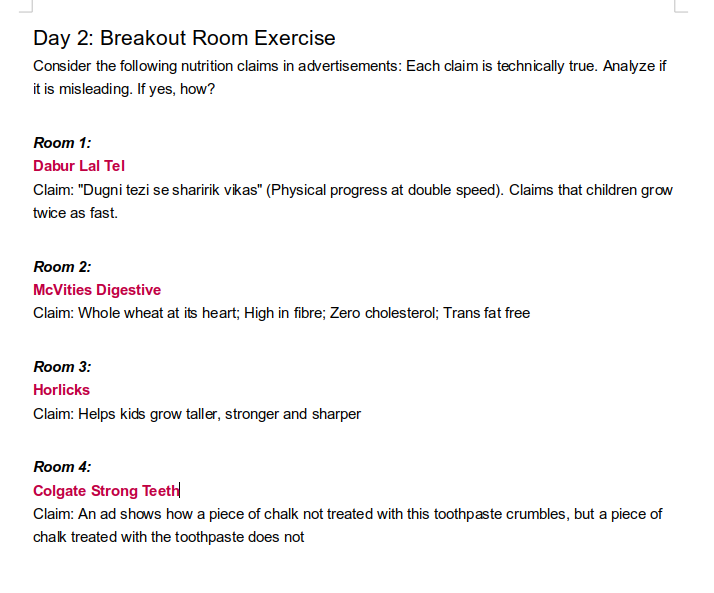
1. Ransomware attacks are increasing. Even small companies in Pune/Bangalore have faced huge losses, in some cases coming to the brink of shutdown because of ransomware attacks
This danger is not really appreciated by people, so I wrote an article about this with @rohit11's help
This danger is not really appreciated by people, so I wrote an article about this with @rohit11's help
2. There was a severe fuel shortage all along the US east coast last week. This was caused by a ransomware attack on the computer of the largest gas pipeline company in the US. The pipelines were shut for 5 days, and they ended paying $5 million in ransom
https://twitter.com/BarrettWilson6/status/1392169626780512258
3. Soon after that, the Irish Health Service was shutdown by a ransomware attack.
But this is not just a problem affecting large infrastructure companies. In fact, @rohit11 believes that smaller companies are being attacked more.
But this is not just a problem affecting large infrastructure companies. In fact, @rohit11 believes that smaller companies are being attacked more.

4. If you don't know what ransomware is, here's a primer: futureiq.substack.com/p/the-risk-of-…
5. What happens to companies that are attacked by ransomware? The impact can be quite bad. "I know companies that are on the verge of going out of business because no data is left to work on."—@rohit11 

6. How to protect yourself?
• Take backups. And test the restores
• Always update all systems to latest versions
• Use EDR software (anti-virus is not good enough)
• Improve your network hygiene
• Take backups. And test the restores
• Always update all systems to latest versions
• Use EDR software (anti-virus is not good enough)
• Improve your network hygiene

7. The worst part is that in spite of all this, most people will ignore these warnings
This is similar to how most governments ignored epidemiologists' warnings about the threat of a pandemic
@zeynep has a great article drawing the parallels and lessons:
theinsight.org/p/battlestar-g…
This is similar to how most governments ignored epidemiologists' warnings about the threat of a pandemic
@zeynep has a great article drawing the parallels and lessons:
theinsight.org/p/battlestar-g…
8. Why should you be extra worried now? Because of the rise of personal mobile devices, work-from-home, and the ability of hackers to demand payment in "untraceable" bitcoin, ransomware has become big business.
https://mobile.twitter.com/SahilBloom/status/1394634904789405701
9. In fact, there are even "platforms" that allow third-party hackers to easily set up their own ransomware attacks.
Ransomware-as-a-service:
Ransomware-as-a-service:
https://mobile.twitter.com/SahilBloom/status/1394634919045832705
10. Ransomware is a big and profitable business that will target your company one day, and that can be devastating. Better take some simple precautions now. 

Read the full article here: futureiq.substack.com/p/the-risk-of-…
/@shantanughosh points out that there are many examples of companies that had to shutdown because of ransomware attacks.
https://twitter.com/shantanughosh/status/1395285225584742400
Interesting question: Does anyone have experience with cyber insurance in India? Good? Bad?
In the US, 94% of the time the cyber insurance company foots the bill if a ransom is paid for ransomware
In the US, 94% of the time the cyber insurance company foots the bill if a ransom is paid for ransomware
https://twitter.com/ShivaRF29/status/1395298341710295042
Correction: "94% ransom paid by insurance" wasn't for just the US. It was based on a survey of 5000 IT managers across 26 countries
80+% have some cyber insurance, and 60+% have cyber insurance that covers ransomware attacks
I wonder what it is in India
news.sophos.com/en-us/2020/05/…
80+% have some cyber insurance, and 60+% have cyber insurance that covers ransomware attacks
I wonder what it is in India
news.sophos.com/en-us/2020/05/…
In the responses to the ransomware thread people are pointing out that the threat is "real, and closer than you think" —@n_karkare
https://twitter.com/mukeshkothari/status/1395410112915771395
And @Nikunj83 says that there were a record number of ransomware attacks in India this year. And you need to be careful with your cyber insurance (negotiate hard)
https://twitter.com/Nikunj83/status/1395429280520171526
• • •
Missing some Tweet in this thread? You can try to
force a refresh




